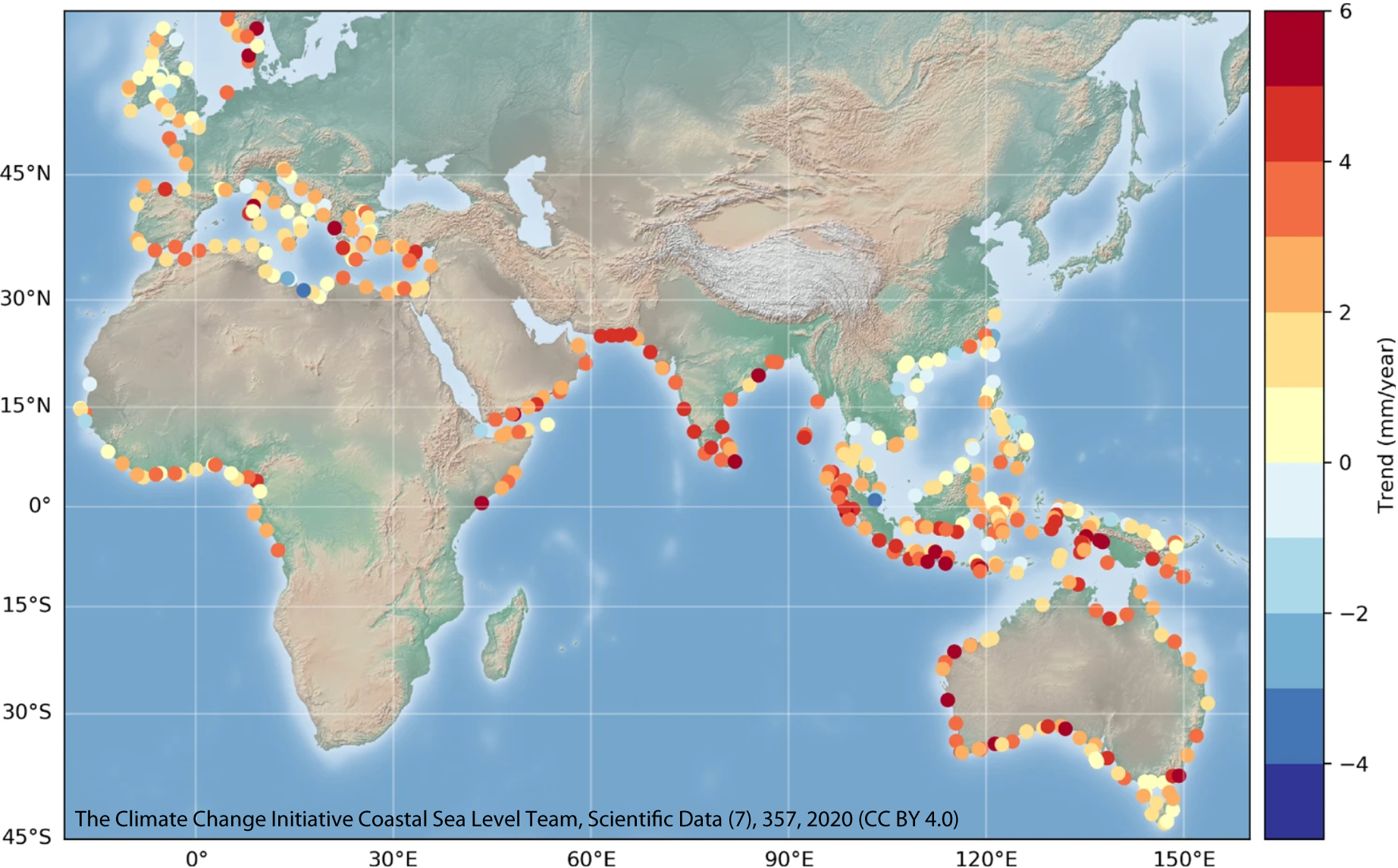New coastal sea level record from reprocessed Jason satellite altimetry

Many coastal regions are exposed to sea level rise and are thus increasingly threatened by the risk of flooding during extreme events. Risk assessment and the development of appropriate adaptation measures are complex and require a reliable data basis of regional coastal sea level changes from precise observations over long time spans. But systematic coastal sea level observations are lacking along most of the world coastlines. Coastal zones are highly under-sampled by tide gauges, and altimetry data are largely defective because of land contamination of the radar signals.
Now, in the framework of the Climate Change Initiative (CCI) Sea Level project of the European Space Agency (ESA), a novel altimetry-based coastal sea level data record has been created. It consists of high-resolution (~300 m) monthly sea level data along the satellite tracks, at distances of less than 3-4 km from the coastlines in general, sometimes even closer, within 1-2 km from the coast. The data set is based on a complete reprocessing of altimetry radar observations from the Jason-1/2/3 missions and provides coastal sea level trends over 2002-2018 at 429 coastal sites located in six regions (Northeast Atlantic, Mediterranean Sea, West Africa, North Indian Ocean, Southeast Asia and Australia). DGFI-TUM is involved in the CCI Sea Level project by designing and testing of improved radar signal processing techniques to exploit the radar signal in the coastal zone and to correct the measurements. The procedure and the new coastal sea level record are described in the article Coastal sea level anomalies and associated trends from Jason satellite altimetry over 2002–2018 (Nature Scientific Data, 2020, doi: 10.1038/s41597-020-00694-w, [PDF]). The data is freely available at the SEANOE repository (doi: 10.17882/74354).
Arcisstraße 21
80333 München